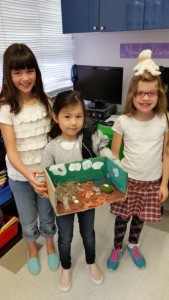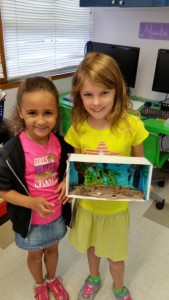Language Arts
We had a lot of fun with morning routine and our morning messages this week. After practicing our calendar routines students have to answer a different question. One question this week was: How many siblings do you have?
It has been great to review with students key concepts learned last year. They have a solid understanding of letters, sounds and most of their high frequency words. As well as how to use them in different contexts. We will be digging into our reading next week. Expect your child to bring their take home reader and practice reading every night. This weekend students took home their writing, songs and poetry binder. I hope they had a chance to sing and read their poetry to the family. We had a great time reviewing the concept of “rimas”(rhyming words) in class. We also worked on “sustantivos”(nouns).
We also worked on the question word “como”, and our libro de palabras importantes. Ask your child to tell you about this book. (It’s going to be a full, rich resource by the end of the year!)
Math
In math we continued to work on calendar math routines. We continued with different ways to represent numbers and then we finished our first review unit.
The highlight of the week was our data comparison game, where kids had to roll the dice and keep track, with tallies, of the numbers that were more common. Then we did a class survey. Students did an amazing job analyzing the results.
We worked on math story problems and scenarios, applying all math concepts of composing, decomposing numbers, counting on, and figuring out ways of counting efficiently.
One game that families can play at home to reinforce this concept is:
Give your child a handful of beans. Then count them by one. Ask your child what would be a more efficient way to count them.
-You can also have them put 10 beans on the table. Have your child look away and remove some. Ask your child how many were removed. Take turns looking away. You can make it trickier adding more beans!
Social Studies & Science
 began our unit on early world civilizations. The class began by finding the area known as Mesopotamia on the world map and identifying it as part of Asia. We discussed the importance of the Tigris and Euphrates rivers and how they were important for trade and farming. We also talked about how the use of canals were important for bringing water to everyone as the development of crowded cities near the rivers, such as Babylon, made it more difficult to get direct access to the water. We learned about the wedge shaped symbols pressed into clay tablets called cuneiform, the Mesopotamian form of writing.
began our unit on early world civilizations. The class began by finding the area known as Mesopotamia on the world map and identifying it as part of Asia. We discussed the importance of the Tigris and Euphrates rivers and how they were important for trade and farming. We also talked about how the use of canals were important for bringing water to everyone as the development of crowded cities near the rivers, such as Babylon, made it more difficult to get direct access to the water. We learned about the wedge shaped symbols pressed into clay tablets called cuneiform, the Mesopotamian form of writing. class had fun trying it on and acting out some of it’s characteristics. We played a food chain game where each child was given a picture of an animal or a plant from the different habitats we have learned about so far. They then had to decide if they were a predator or prey and where they fit in the food chain.
class had fun trying it on and acting out some of it’s characteristics. We played a food chain game where each child was given a picture of an animal or a plant from the different habitats we have learned about so far. They then had to decide if they were a predator or prey and where they fit in the food chain.English Spelling/Writing
This week word sorts were on the word families “in, un, and an“. The class met with me in small groups to do some word work, they sorted individually and they practiced reading all their words. They also added words that they came up with on their own to each of these word families. Next week I will send home a copy of their word list so that they may continue to sort them in different ways at home.
We did lots of writing in our journals this week. The students love sharing their writing and pictures on the overhead and this gives them a great opportunity to present in front of the class. I encourage everyone to use inventive spelling in their journals; however I also encourage them to use the correct spelling of words they know from their sort lists, our word wall and our vocabulary of the week. In addition students are beginning their own “dictionary” in the back of their journal of words they frequently use but need help remembering how to spell.
Music
We discussed how several pieces in Sr. Kit‘s harp repertoire came to be titled, including “The Waltz of the Dolphins,” and “Shadow Spirit.” We also listened to and discussed several pieces he is regularly asked to play for weddings.
Art
The First Grade students started a Scarab Beetle collage project this week in art. They learned that the ancient Egyptians revered Scarab Beetles as a symbol of good luck, and that beetle designs are often used in ancient Egyptian art. Ask your student why these beetles are sometimes called Dung Beetles! The firstgraders are designing their own Scarab Beetles using various papers, and we will finish these bugs next week.
